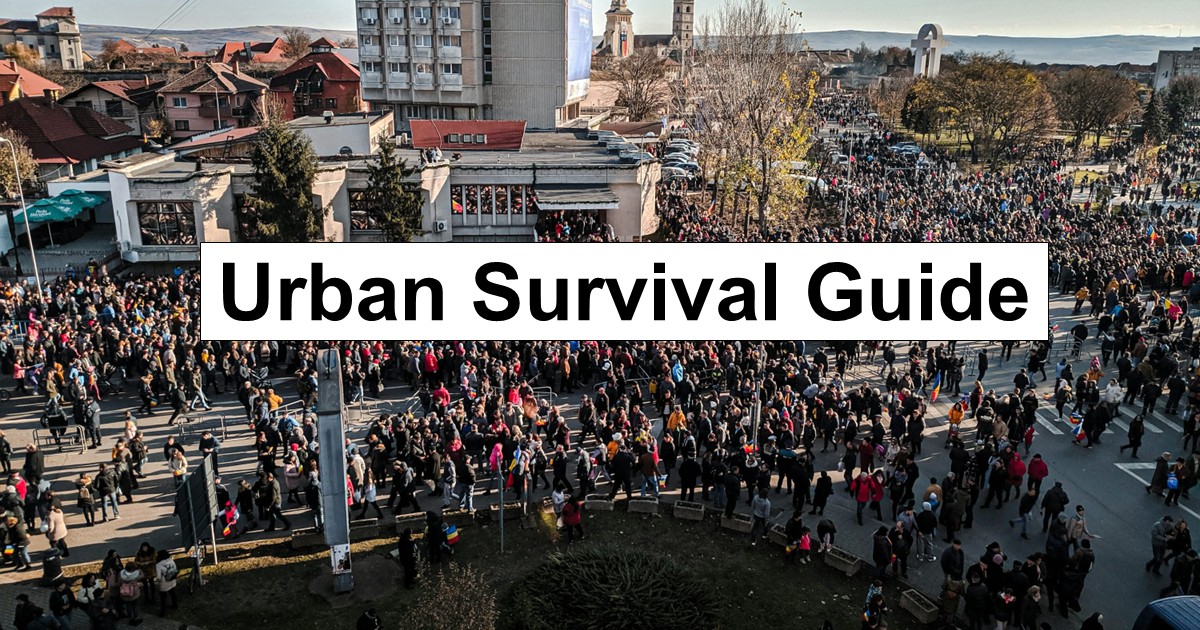I was watching a video the other day that really got me thinking again about urban survival scenarios. When you live in a city or suburban area, the challenges of surviving a major disaster or civil unrest are very different than what rural folks face; I’m somewhere in the middle of that spectrum, which means I’ll be on the unprepared sheeple’s radar in short order.
Obviously, the density of people alone creates unique problems that require specific preparation. Here’s the video that I was watching:
What struck me most about this presentation wasn’t just the eight specific points covered (though they’re all valuable). It was the final message that resonated deeply: “Your survival depends on what you do now.” This simple statement contains the entire philosophy of preparedness in just seven words.
Why “Now” Is Everything in Urban Survival
As I said, the urban environment presents unique challenges during emergencies. When systems fail in densely populated areas, the timeline to chaos is compressed almost instantly. What might take days or weeks to become problematic in rural areas can deteriorate in hours in most towns and cities.
This is why preparation isn’t something you can’t do when trouble starts. By then, it’s already too late.
In my household, I periodically reassess our readiness for potential grid-down situations. No doubt it’s easy to become complacent, especially when years pass without a problem. But readiness isn’t about responding to what’s happening right this minute. Rather, it’s about being prepared for what could happen at any time.
Ask yourself: if the power went out across your city right now and likely wasn’t coming back for weeks, what would you wish you had done yesterday?
The First Priority: Get Out If You Can
Of all the points covered in the video, one stands above the rest for urban dwellers: having the ability to leave quickly. Cities and even suburbs become pressure cookers during extended emergencies. Resources go faster and security concerns skyrocket as the concentration of desperate people creates a pressure cooker.
Getting out early—before everyone else has the same idea—can make all the difference between a smooth evacuation and being trapped in gridlock or worse.
This means:
- Having evacuation routes planned (with multiple alternatives)
- Keeping your vehicle’s fuel tank at least half full at all times
- Maintaining a ready-to-go bug out bag for each family member
- Having destinations arranged in advance
Obviously, whether evacuation is possible depends on many factors including the nature of the emergency, your physical capabilities, and your resources. But having the ability to leave is always better than being forced to stay because you couldn’t evacuate.
If You Must Stay: The Art of Urban Invisibility
Sometimes leaving isn’t possible or practical. In these cases, the video makes it clear that your safety often depends on remaining unnoticed and avoiding conflict areas.
Even in an urban environment, survival isn’t about firefights and confrontations. It’s about staying completely off the radar. The places to absolutely avoid during unrest are:
- Grocery stores and supermarkets
- Pharmacies and drug stores
- Banks and financial institutions
- Government buildings
- Major transportation hubs
- Or anywhere else people may gather
These locations become immediate focal points for both desperate people and authorities attempting to maintain control. Remember that the goal isn’t to compete for dwindling public resources, it’s to not need them at all.
The Supplies That Make Urban Survival Possible
This brings us back to the inevitable point: having crucial supplies beforehand eliminates your need to venture into these high-risk areas.
Water becomes critical within days (or even hours in extreme weather). Food supplies in cities can be depleted within hours of a major emergency. Medical services become overwhelmed almost immediately.
At minimum, urban households should maintain:
- Water: 1 gallon per person per day (two-week minimum) is the bare minimum; shoot for five gallons per person per day.
- Shelf-stable food (again, two-week minimum) but you can do much more with the right information.
- Essential medications (including over-the-counter basics) but definitely prescription medications you need to live.
- Alternative lighting options, such as flashlights and lanterns; I prefer LED options, but do what makes sense for you.
- Communications equipment that allow you to know what’s happening; I don’t like hand-crank radios, but do what works for you.
- Security enhancements because things might get bad!
- Sanitation supplies (when water systems fail, diseases spread fast).
These aren’t paranoid preparations because they’re the basic insurance policy that prevents you from becoming one of the desperate people fighting over the last case of bottled water. You don’t want to be that guy or gal.
The Reflection That Matters
The truth about urban survival is that it’s largely determined before the crisis ever happens. Your decisions today create the options you’ll have tomorrow. This is why the video’s closing message is so powerful. Your survival truly does depend on what you do now, not what you’ll do when trouble arrives.
Please take the time to watch the full video linked above. It covers eight critical aspects of urban survival that everyone living in a metropolitan area, including the suburbs, should consider.
The bottom line is clear: the prepared tend to survive, even thrive, while the unprepared must scramble. And if you want to dig deeper into home security aspects of urban preparedness, I discuss additional strategies in my home security book but if you want to be more prepared for SHTF scenarios, then consider my Survival Blueprint book which covers much more than basic security measures.
What urban survival topics would you like me to cover in more depth?

Leave a Reply